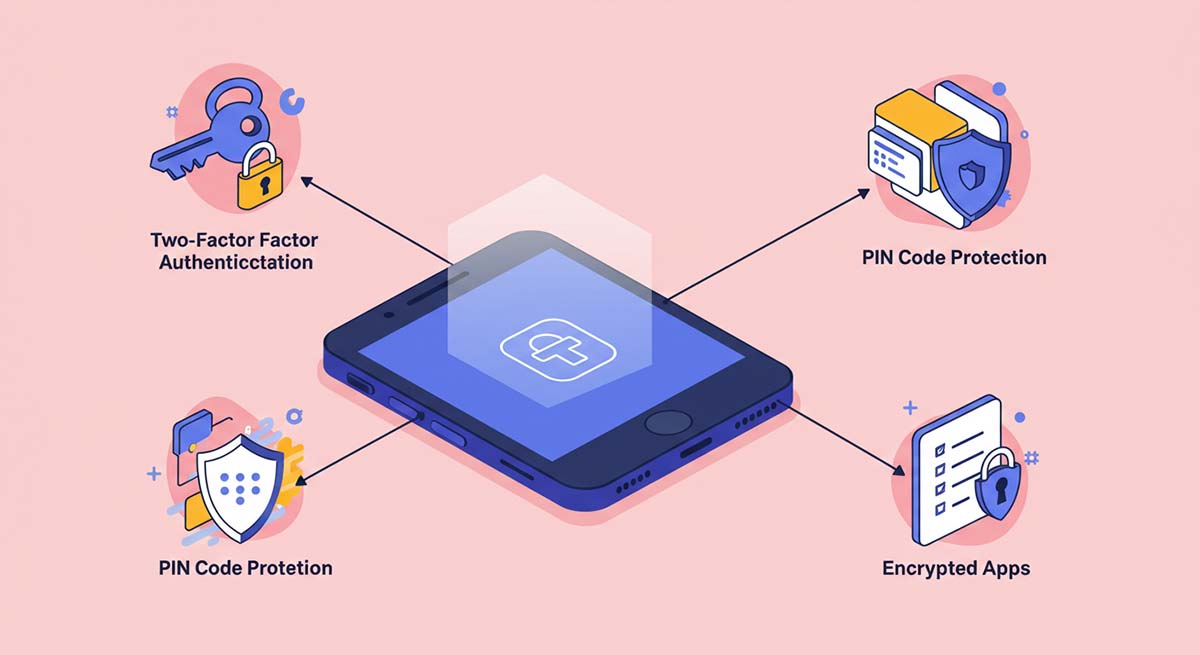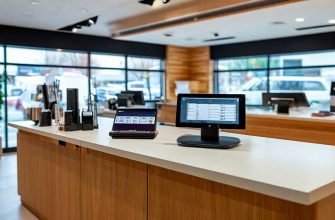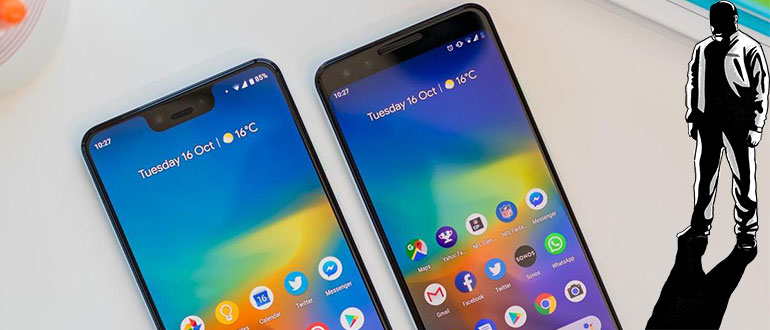In today’s digital age, the security of your phone number has become a growing concern. With increasing reports of Phone Number Hacked cases via text or call, it’s essential to understand how these attacks happen and how to protect yourself.
This article breaks down the common methods used by hackers, offers expert insights, and provides actionable tips to safeguard your phone number. Learn how to stay one step ahead and keep your personal information secure.
Understanding Phone Number Hacking
Phone number hacking is a growing concern as mobile devices become increasingly integral to our daily lives. Hackers target phone numbers for various reasons, including gaining access to personal accounts, stealing financial information, or bypassing security features like two-factor authentication.
Comparison of Phone Number Hacking Methods:
Comparison of Phone Number Hacking Methods
| Method | Complexity | Risk Level | Prevalence |
|---|---|---|---|
| SIM Swap | Medium | High | Growing |
| Smishing | Low | Medium | High |
| Vishing | Low | Medium | Moderate |
The methods used to compromise phone numbers are diverse, but three common techniques stand out: SIM swapping, phishing, and spoofing.
SIM swapping involves tricking mobile carriers into transferring a phone number to a new SIM card controlled by the hacker, effectively granting them full access to the victim’s phone.
Phishing, specifically through text messages (known as smishing), deceives victims into clicking on fraudulent links or sharing sensitive information.
Call spoofing, or vishing, allows hackers to impersonate trusted sources to extract personal details over the phone.
Phone numbers are particularly valuable targets because they often serve as keys to a wide range of accounts and services. Hackers can exploit these vulnerabilities to access email, social media, and financial accounts, potentially leading to identity theft or financial loss.
Understanding these methods is crucial for protecting oneself from such attacks. The next sections will delve into these specific hacking techniques in greater detail.
SIM Swap Attacks
SIM swap attacks occur when hackers gain control of a victim’s phone number by convincing the mobile carrier to transfer the number to a new SIM card. This allows the attacker to intercept calls, texts, and potentially access sensitive accounts.
Stages of a SIM Swap Attack:
Stages of a SIM Swap Attack
| Step | Description |
|---|---|
| 1. Information Gathering | Attacker collects personal data (name, phone number, address). |
| 2. Contact Carrier | Attacker impersonates the victim and requests a new SIM card. |
| 3. Gain Control | Phone number is transferred to attacker’s SIM; they intercept calls and texts. |
One of the biggest dangers of SIM swapping is that it can bypass two-factor authentication (2FA), granting hackers access to financial and personal accounts. A high-profile case in 2020 saw Twitter accounts, including those of celebrities, hacked through SIM swapping.
These attacks are particularly concerning due to their ability to facilitate identity theft and fraud.
Mechanism of SIM Swap
SIM swapping typically involves a hacker gathering personal information about the victim, such as through social engineering or phishing. They then contact the victim’s mobile carrier, impersonating the victim to request a SIM card transfer.
Once successful, the hacker gains control over the phone number, enabling them to intercept calls and texts, including sensitive messages such as 2FA codes, to access accounts and commit fraud.
Potential Consequences
The consequences of a SIM swap attack can be devastating. Hackers can gain access to personal accounts, including banking and social media, leading to identity theft, financial loss, or reputation damage.
Consequences of SIM Swap:
Consequences of SIM Swap
| Consequence | Impact |
|---|---|
| Loss of Account Access | Hackers reset passwords using intercepted 2FA codes. |
| Financial Theft | Bank accounts and crypto wallets may be drained. |
| Identity Theft | Stolen number used to impersonate and deceive contacts. |
Victims may also be locked out of their own accounts, and the hacker can use their phone number to bypass two-factor authentication, making it easier to steal sensitive information or commit fraud.
Phishing via Text Messages
Smishing is a type of phishing attack that uses text messages to trick victims into revealing sensitive information.
Hackers typically impersonate legitimate entities, like banks or service providers, and send fraudulent links or urgent requests for personal details.
A common tactic involves asking the recipient to “verify” account information by clicking a link, which leads to a fake website designed to steal login credentials. In 2020, the Federal Trade Commission reported a significant rise in smishing scams, highlighting the growing threat to mobile phone users.
How Smishing Works
Smishing works by sending deceptive text messages that appear to come from trusted sources, such as banks or online services. These messages often contain links to fraudulent websites designed to steal personal information like passwords, account numbers, or credit card details.
Attackers may use urgent or alarming language to prompt quick action, making it more likely that recipients will fall victim to the scam and disclose sensitive information.
Risks Associated with Smishing
The risks of smishing are significant, as it can lead to identity theft, financial loss, or unauthorized access to sensitive accounts. Victims may unknowingly provide their login credentials, banking information, or even two-factor authentication codes, giving hackers full access to their accounts.
In some cases, smishing attacks can also install malware on the victim’s phone, further compromising their security and privacy.
Voice Phishing
Vishing, or voice phishing, is a scam where attackers impersonate legitimate organizations over the phone to steal personal information.
Common tactics include pretending to be a bank representative or government official, urging victims to disclose sensitive details like account numbers or Social Security numbers.
According to the Federal Trade Commission, vishing is on the rise, with scams becoming increasingly sophisticated. Hackers often use caller ID spoofing to make their calls appear legitimate, further deceiving victims and gaining their trust.
Vishing Techniques
Vishing techniques often involve creating a sense of urgency to manipulate the victim into revealing sensitive information. Common strategies include claiming that the victim’s account has been compromised or that immediate action is required to avoid penalties.
Attackers may use threatening language, like the risk of account suspension, or offer false rewards. Spoofed caller IDs also make it difficult to identify fraudulent calls, increasing the likelihood of deception.
Impact of Vishing on Individuals
The impact of vishing on individuals can be severe, resulting in financial loss, identity theft, and emotional distress. Victims may unknowingly provide sensitive details, like bank account numbers or passwords, leading to unauthorized transactions or fraud.
In some cases, the emotional toll of being manipulated by seemingly trustworthy sources can cause long-term psychological effects, especially if personal or financial security is compromised.
Real-Life Incidents and Case Studies
Real-life cases of phone number hacking illustrate the severe consequences of these attacks. One notable example is the 2020 Twitter hack, where high-profile accounts were compromised through SIM swapping.
Overview of Notable Phone Number Hacks:
Notable Phone Number Hacked Cases
| Victim | Method | Outcome | Year |
|---|---|---|---|
| Jack Dorsey (Twitter CEO) | SIM Swap | Twitter account hijacked, false tweets sent | 2019 |
| Crypto Investor | SIM Swap | Lost over $100,000 in digital assets | 2020 |
The hackers gained control of prominent accounts, including that of CEO Jack Dorsey, using stolen phone numbers to bypass security measures. Another case involved a woman who lost over $10,000 after a smishing scam convinced her to reveal her bank account details via a fraudulent text message.
These incidents highlight how vulnerable personal and financial security can be when attackers exploit phone numbers.
Similarly, voice phishing (vishing) has also affected numerous victims, with attackers impersonating financial institutions to steal sensitive information.
In all these cases, the victims suffered significant financial and emotional damage. Such attacks are growing in frequency, with reports of smishing and vishing scams increasing each year, underscoring the importance of understanding and preventing phone number-related hacking risks.
High-Profile SIM Swap Cases
High-profile SIM swap cases have highlighted the vulnerability of phone numbers to cyberattacks. In 2020, a group of hackers targeted prominent individuals, including Twitter CEO Jack Dorsey, whose account was compromised through a SIM swap.
Hackers used the stolen phone number to gain access to sensitive information, causing widespread security concerns. Another notable case involved the personal accounts of several celebrities being hijacked after their phone numbers were swapped.
These incidents illustrate how even high-profile individuals are at risk, emphasizing the importance of securing phone numbers against SIM swap attacks.
Case Study: Twitter CEO Hack
In July 2020, Twitter CEO Jack Dorsey’s account was compromised through a SIM swap attack.
Hackers gained control of his phone number, allowing them to bypass security measures and access his Twitter account.
This incident, which affected high-profile individuals, raised significant concerns about the vulnerabilities of mobile numbers in the digital age, particularly how SIM swaps can lead to serious breaches of personal and organizational security.
Smishing and Vishing Scams
Smishing and vishing are two common types of phone-based scams that exploit phone numbers to steal personal information. Smishing involves fraudulent text messages designed to trick recipients into revealing sensitive details, while vishing uses phone calls to impersonate trusted organizations and elicit information.
In 2020, the FTC reported a 300% increase in smishing scams, demonstrating their growing prevalence. These scams often exploit fear or urgency, pushing victims to act quickly, leading to financial loss or identity theft.
Recognizing and avoiding these threats is crucial to protecting one’s phone number and personal data.
Case Study: AI-Driven Deepfake Scams
AI-driven deepfake scams have become a serious threat, allowing hackers to impersonate voices and manipulate phone conversations.
In one high-profile case, scammers used deepfake technology to mimic a CEO’s voice and trick an employee into transferring over $240,000.
These scams are increasingly difficult to detect, as deepfake audio and video can be nearly indistinguishable from genuine communications, making them a powerful tool for exploiting phone numbers and personal data.
Expert Insights on Phone Number Hacking
Experts emphasize that phone number hacking is becoming an increasingly sophisticated threat. According to cybersecurity analyst James Martin, “Mobile numbers are valuable gateways to many services, from banking to social media accounts, making them prime targets for cybercriminals.
” SIM swapping is particularly effective because it allows hackers to bypass two-factor authentication, a security feature meant to protect sensitive accounts. Dr.
Emma Li, a leading researcher in mobile security, points out that telecom providers are often the weak link in these attacks, as they still rely on outdated security practices for verifying identity.
Experts recommend using strong, unique passwords and multi-factor authentication (MFA) for added protection.
Additionally, many cybersecurity professionals suggest using apps that provide enhanced encryption, such as Signal, to prevent phone number theft.
Despite these measures, they caution that the most effective defense remains vigilance and awareness of emerging threats, like smishing and vishing, which continue to evolve alongside advancements in AI and machine learning.
Cybersecurity Expert Opinions
Cybersecurity experts agree that phone number hacking is a significant and growing threat. Dr.
Samuel Edwards, a cybersecurity researcher, states, “The ease with which phone numbers can be exploited, especially with SIM swapping and smishing, makes them an appealing target for hackers. ” Experts recommend using multi-factor authentication (MFA) and strong, unique passwords to mitigate these risks.
Additionally, experts emphasize the importance of securing mobile accounts with carrier-specific PINs and the need for telecom companies to adopt more robust identity verification methods to prevent such attacks.
Vulnerabilities in Mobile Networks
Mobile networks are vulnerable to various security gaps that hackers can exploit to gain control of phone numbers.
Weak authentication protocols, inadequate verification procedures, and reliance on outdated systems make it easier for cybercriminals to execute SIM swaps or intercept communications.
In 2019, researchers discovered that mobile carriers worldwide lacked proper protections, leaving millions of customers exposed to phone number-based attacks, which highlights the need for improved security infrastructure in the telecom industry.
Law Enforcement Perspectives
Law enforcement agencies are increasingly concerned about phone number hacking, as these attacks often lead to identity theft, fraud, and financial crimes.
According to FBI cybersecurity expert Daniel O’Rourke, “The difficulty in tracking perpetrators and the international nature of many attacks complicate investigations.
” Law enforcement also faces challenges due to limited cooperation from telecom providers and the anonymity offered by online channels. Despite these hurdles, authorities are strengthening efforts to combat these crimes, urging individuals to report hacks and adopt preventive security measures.
Challenges in Investigating Phone Number Hacks
Investigating phone number hacks is challenging due to the sophisticated techniques employed by cybercriminals, such as SIM swapping and spoofing. Additionally, the international scope of these attacks complicates jurisdictional issues, and limited cooperation from telecom companies can hinder progress.
Law enforcement also faces difficulties in tracking anonymous hackers who use encrypted communication channels, making it harder to gather evidence and identify perpetrators.
Preventive Measures and Recommendations
To protect against phone number hacks, there are several preventive measures individuals can adopt. First, enabling multi-factor authentication (MFA) is essential for securing sensitive accounts, as it adds an extra layer of protection beyond just the phone number.
Phone Number Security Tips and Effectiveness:
Security Measures and Their Effectiveness
| Measure | Description | Effectiveness |
|---|---|---|
| Account PIN with Carrier | Prevents unauthorized SIM swaps | High |
| 2FA via App | Secures logins without relying on SMS | Very High |
| Use of Encrypted Messaging | Prevents message interception | High |
Setting a PIN with your mobile carrier can also help prevent unauthorized SIM swaps. Experts recommend avoiding public Wi-Fi when accessing banking or sensitive information, as it increases the risk of interception by hackers.
Additionally, users should be cautious of unsolicited messages or phone calls requesting personal information, as these are often indicative of phishing attempts.
Using encrypted messaging apps like Signal or WhatsApp, which offer end-to-end encryption, further enhances security.
Telecom companies must also improve their identity verification processes, and users should regularly review their account settings to detect any suspicious activity. Finally, educating yourself about the latest security threats, such as smishing and vishing, can help in recognizing and avoiding potential attacks.
These steps can significantly reduce the likelihood of phone number hacks and their associated risks.
Securing Your Mobile Account
To secure your mobile account, start by setting a strong PIN with your mobile carrier to prevent unauthorized SIM swaps. Enable multi-factor authentication (MFA) on all accounts that support it, adding an extra layer of protection against hacking attempts.
Regularly review your account activity and security settings, especially for banking and social media apps.
Additionally, avoid using public Wi-Fi for sensitive transactions, as it increases the risk of data interception.
Implementing these security measures significantly reduces the chances of phone number hacking and unauthorized access.
Setting Up PINs and Passwords
To protect your mobile account, set a strong PIN with your carrier to prevent unauthorized SIM swaps. Ensure that your PIN is unique and not easily guessed.
Additionally, use complex passwords for all online accounts, incorporating numbers, symbols, and both uppercase and lowercase letters.
Avoid using the same password across multiple accounts to reduce the risk of a breach if one account is compromised.
Regularly update your PINs and passwords to maintain security.
Recognizing and Avoiding Phishing Attempts
To recognize and avoid phishing attempts, always be skeptical of unsolicited messages or calls asking for personal information. Verify the sender’s identity through official channels before responding.
Look for signs of urgency or threatening language, which are common tactics used to manipulate victims. Additionally, never click on suspicious links or download attachments from unknown sources, as they may lead to fake websites designed to steal your data.
Using Secure Communication Channels
To protect against phone number hacking, use secure communication channels that offer end-to-end encryption, such as WhatsApp, Signal, or Telegram. These platforms prevent unauthorized parties from intercepting your messages or calls.
Avoid using standard SMS and voice calls for sensitive transactions, as they are vulnerable to hacking techniques like interception and spoofing. By switching to encrypted communication apps, you add an additional layer of security to your mobile interactions, reducing the risk of phone number exploitation.
Benefits of End-to-End Encrypted Apps
End-to-end encrypted apps, like Signal and WhatsApp, ensure that only the sender and recipient can read the messages, preventing hackers from intercepting or accessing communication.
These apps provide a higher level of security compared to standard SMS or phone calls, which can be vulnerable to eavesdropping.
Using encrypted apps significantly reduces the risk of phone number exploitation, keeping sensitive data safe from unauthorized access.
Limitations of Standard SMS and Calls
Standard SMS and phone calls lack robust encryption, making them vulnerable to interception and spoofing. Hackers can exploit these weaknesses to gain access to sensitive information or impersonate trusted sources.
Additionally, SMS messages and calls do not offer any built-in security measures, leaving users exposed to attacks like smishing and vishing. Switching to encrypted communication methods is essential to improve security and reduce risks.
Staying Informed and Vigilant
Staying informed about the latest security threats is crucial to protecting your phone number from hacks. Regularly check for updates on phishing tactics, SIM swap attacks, and other phone number-based scams.
Following cybersecurity blogs, attending webinars, and subscribing to relevant news sources will help you stay ahead of emerging threats. Additionally, being vigilant about unsolicited texts or calls and reporting any suspicious activity can prevent attacks before they happen, helping you safeguard your personal information and mobile security.
Regularly Updating Security Settings
To maintain robust protection against phone number hacks, regularly update your mobile security settings. This includes changing passwords, updating software to patch known vulnerabilities, and reviewing privacy settings.
Many mobile devices offer automatic security updates, but it’s important to manually check for updates and enable them to safeguard against the latest threats. Consistently reviewing and strengthening your settings ensures your phone remains secure from evolving attack methods.
Being Cautious with Unknown Communications
Always exercise caution when receiving messages or calls from unknown numbers, especially if they request personal or financial information.
Scammers often use techniques like caller ID spoofing to make their communications appear legitimate.
If in doubt, do not respond directly; instead, verify the sender’s identity through official channels. Avoid clicking on links or downloading attachments from unfamiliar sources to reduce the risk of phishing or malware.
Conclusion
Phone number hacking through text or call is a real and growing threat. Methods such as SIM swapping, smishing, and vishing put users at risk of identity theft, financial loss, and privacy invasion.
To protect your phone number, it’s crucial to use strong security measures like multi-factor authentication, PINs, and encrypted messaging apps. Staying informed, being cautious, and regularly updating security settings are essential steps to safeguard your personal information.













